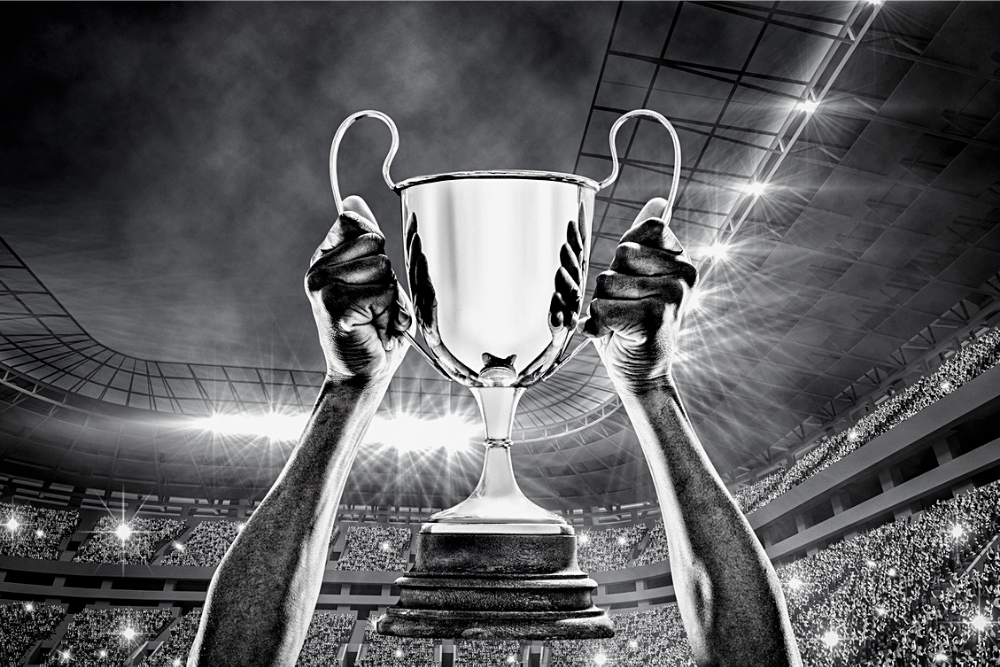Goal setting for athletes is something that gets talked about a lot. So much so that people have literally made careers and businesses off this rhetoric alone. A relaxing Sunday watching football almost always means you are going to come across a sports drink or clothing line commercial preaching that same rah-rah attitude and dropping a few motivational one liners. We regurgitate the same phrases, “It’s all about hard work and dedication”, “[Insert Athlete’s Name Here] worked this many hours a day before practice”, “To achieve you have to believe”, and the list can go on and on.
But is this what goal setting is? Is this a realistic way to achieve athletic success?
In some cases it can be, but the devil is in the details. The path to success looks different for each individual athlete and can only be defined by them. Generally, when it comes to goal setting for athletes we tend to look at the finished product and take a big picture look at what success is. This is an incomplete and sensationalized view of success. We know this because most goals are often comprised of many smaller goals and milestones. Also, there is a progression to success and hard work. An individual’s ability in all areas of life is determined by the work that was done before, you have to slowly build from where you are to where you want to be.
In this article I am going to cover the basics of athletic goal setting and shed light on some common mistakes athletes make.
Goal Setting For Athletes: The Basics
The basics of goal setting really don’t change just because someone is an athlete. However, it is important to understand the nature of many athletic goals. Often these goals are grand in nature with odds that are not in the individuals favor. This doesn’t change the process but it is important to consider that we aren’t talking about more easily accessible accomplishments like saving an extra 200 bucks a month. There is a prerequisite level of focus that has to be present to do this right.
How to set some goals:
- Be Specific – Don’t just say I want to have a good season or even that you want to be the best at your position. Set goals like rushing for 10 touchdowns or winning 90% of your soccer matches.
- Measure, Measure, Measure – Make your goals measurable. This plays into being specific but it is important to be able to measure your progress. Set up a system for exactly how you are going to measure. This can be through time frames, individual game results, training session performance, etc.
- Make a Plan – Once you know where you want to be, make a plan for how you’re going to get there. Often our goals are big and need to be broken down into smaller action steps.
We Must Go From Point A To Point B
Point B is the goal and Point A is where you currently are at. We can’t move to Point B before we know Point A. The destination is only half of it, you have to know where to begin first. Until you identify who you are in this moment your goals are really just dreams. They are great to fantasize about but actionable steps are the only way to real results.
This is where a lot of athletes start messing up. They are really good at determining their goals but have a hard time being realistic about where they’re at. Before we start on the path to success it is important to discover where you are. Ultimately finding an athlete’s Point A is about determining if they possess the prerequisite skills for the task. For example, if a high school freshman wants to be a starting Defensive End in college there will be some prerequisite displays of athleticism that more often then not a player of that caliber can display. Now let’s say those athletic qualities are a 405 lb squat and a 30 inch vertical jump, how do we get there?
What most athletes do is start arbitrarily training a bunch of athletic components at the highest intensity possible. Some at least look up the training program of an NFL player or copy what the University of Central Florida did for their offseason training. In either case this is a problem and displays zero understanding of the athlete’s Point A. Before we start working towards that goal let’s structure a plan.
What Are Your Abilities…Today?
This is an important question that I think far too many athletes have a hard time answering. But, if you can be realistic with yourself, the ability to answer that question is very powerful. It allows you to build a framework of how you are going to try to achieve your goal. To continue with the Defensive End example, let’s say that freshman cannot properly display a bodyweight squat pattern and has shown no understanding of jumping mechanics, this then is our starting point.
So what path to success makes the most sense?
- Start a high intensity training program based off what elite athletes do. You run sprints, max out in the weight room, and work, work, work every day.
- Take a bunch of random private sessions with coaches around town to try and add skills and improve athleticism. But ultimately there is no structured training plan other then to train.
- Use where your abilities are today to implement an appropriate training plan based on skill acquisition, movement quality, and athletic development which will progress over time as your current abilities improve.
If your answer was #3…you got it right!
Seems simple enough when you read it above but putting it into practice is the problem. So in the case of this Defensive End I would say he needs to learn how to properly execute fundamental movement patterns before we start trying to get his numbers up. The funny thing is that if we do this he will have a far higher peak performance ability than if he spends his high school days maxing out with poor form and chasing numbers. He will make greater improvements over a longer time and build a more resilient body in the process.
Stop Looking For Quick Fixes
Our desire for a quick fix is not isolated to sports performance. However, in sports and life the ability to play the long game is usually in an individuals favor. Trust me I get it, with Instagram pages advertising 6 weeks to improved speed and the abundance of media coverage showing what the elite do to improve, it can be hard not to buy in to these methods. But remember…we need to plan based off today to get to tomorrow.
Athletes need to train in accordance to their skill level and progress when they can routinely display the skills they have been working on. We don’t sprint before we crawl, so why are most high schools in America filled with kids maxing out on squats when they can’t even properly perform a bodyweight variation? There is a complete lack of progression in most of our youth sports today and we have to change that. Proper goal setting for athletes involves careful planning and appropriate exercise selection. This message is important for everyone involved in youth sports, from the coaches and clubs to the parents and athletes.
We seem to have this fundamental flaw in athletic development, always mirroring the elite with a lack of consideration for the current state of an individual. This doesn’t happen in school, if that same freshman had a goal of getting accepted to Harvard, would they just skip information and start reading college textbooks? Heck no! So why do we think athletes all should train the same regardless of age and ability? The truth is, just like you have to put the time in to understand each subject, grade after grade with each year building on the previous, athletic development is no different. It requires progression and fundamental understanding before we add complexity.
If we can understand this and embrace the process, our ability to set goals, stay on the path to success, and ultimately achieve what we want is greatly improved.
Goal Setting For Athletes: So What Now?
How you utilize this information is ultimately up to you. Your goals and how you function best to achieve them is a very individual process. What I would urge athletes to do, especially young athletes, is to set challenging goals, be realistic about where you currently are at, and avoid quick fixes along the way to achieving success. I know it seems counterintuitive but if we try to rush the process by skipping steps and taking on advanced movement and practices we can end up spinning our wheels and delaying results. Remember, athletic development is like a pyramid, the larger the foundation the higher the peak.
Develop a plan to achieve your goals that builds on your current abilities. Working on an ability you don’t possess yet is like skipping from pre-algebra to calculus. All of this isn’t to say that you can’t set big goals for yourself. I personally have no problem with a young athlete having a goal of playing at an elite level. It is just important to understand that this lofty goal is going to require many smaller goals and accomplishments to become a reality. If you can pull that off, you will develop as an athlete and give yourself a better chance of getting where you want.
So, to summarize goal setting for athletes:
- Set specific goals that can be measured.
- Develop an action plan for achieving these goals.
- Be realistic about your current skills before starting.
- Progress accordingly based on where you are currently at.
- Avoid advanced concepts before you can execute the basics.
- Consistently evaluate your progress to again understand your current skills.
- Have fun and get after it!
I hope this information helps you to accomplish your athletic goals. If you are interested in the concepts of athletic development I discussed please reach out here and I’ll be happy to get back to you as soon as I can.

